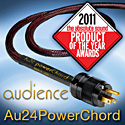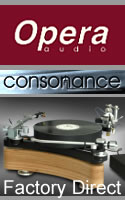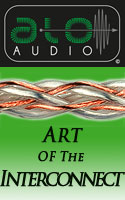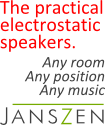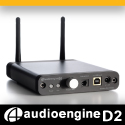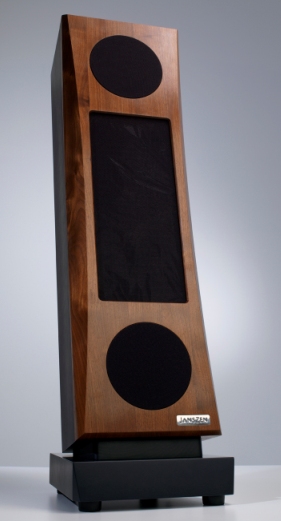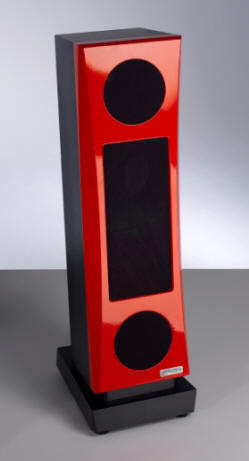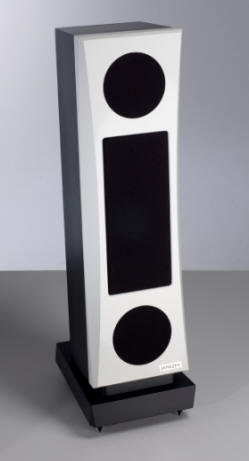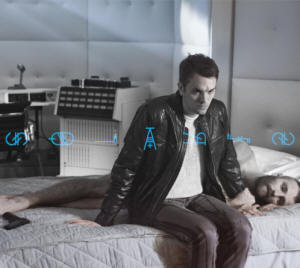|
|
You are reading the older HTML site
Positive Feedback ISSUE 59
janszen zA2.1 Loudspeakers as reviewed by Peter Davey
JansZen is back! Well, they really hadn't gone anywhere but sort of remained "behind the scenes" so to speak. We're talking about one of the granddaddies of ESL technology, much respect here.
I can remember, years ago when I was first introduced to high end audio, a friend had a system consisting of ESL speakers (Martin Logans), and ever since then I was obsessed with that sound. Now, the ML speakers are typically dipoles, so that also played a part with my obsession, but just the technology aspect of electrostatic designs really impressed me. For those that don't understand the technology, I'll give a brief explanation. A practically weightless membrane is suspended between plates. The membrane is made up of a very thin film, usually of polyester, coated with an electrically conductive material charged to hundreds or thousands of volts pumped with DC charge (using what is called a Bias Supply). The plates have a stepped up version of the audio AC signal on them, also hundreds or thousands of volts, and this pulls the membrane back and forth very evenly with electrostatic attraction and repulsion. The sound goes out through openings in the plates. This is a very basic explanation of course, one could do much more research using the vast Internet , but in essence, it's a weightless driver resulting in very little distortion or coloration. Naturally an ESL membrane is a dipole, sound comes from both the front and the rear of the driver. Most of JansZen's designs are a bit different.
These speakers are a monopole; sound is only emitted from the front of the speaker. The sound from the backs of the ESL's is soaked up by layers of fill in the cabinet. This might seem like a waste, but only a dB or two is lost, and there are lots of advantages to this design, one major being room placement. Most dipole speakers require them to be placed several feet from the rear wall out into the room, and most people don't have such luxury. Many of you might know that my main speakers are a set of fully refurbished Apogee Scintillas (1 ohm) so I know all about picky rooms and placements! This was a nice change, I was able to push the speakers closer to the rear wall, and that gave me some of my room back. Another advantage is the stuff behind the ESL's supply damping, which makes sure the membranes do not do anything they are not supposed to do, mainly not bounce around on their own like a car without shock absorbers. Transients are cleaner and every note sounds perfectly even. Lastly, comb filter coloration caused by the backwave is eliminated when there is no backwave. You might expect the lack of a dipole backwave to reduce the air, but with the JansZens as the sound seemed to be coming from everywhere.
JansZen has been designing ESL speakers since the '50s revolving around their patented technologies. Most of the designs used one or more flat ESL driver enclosed in a cabinet accompanied by one or more cone drivers for the lower octaves. The woofers chosen for this particular model are dual 7" low mass alloy coned drivers in a sealed enclosure. I've always had a love/hate relationship with sealed enclosures, if you don't do it right the bass always falls flat on its face. The zA2.1s don't have this problem; I tend to play a lot of bass heavy music whether it is artificial (Trentemoller) or real (Bill Laswell). More on that later. The enclosure chosen for this speaker is completely dead, and I was sent the optional JansZen Deadwall laminated version. They coat the inside of the cabinet with top-secret material adding nearly 10lbs difference to the speaker. There were no audible reverberations here when knocking on it. Unfortunately, I didn't get to hear the difference between this model and the regular model, but even over the phone I was able to hear the difference when David knocked on the deadened cabinet vs. the non-deadened. The baffle is made of 2.5" thick hardwood... these things are solid.
I will say though, the biggest difference between the zA2.1's and their previous offerings is not only the sound, but also the aesthetics. When I was sent pictures of them prior to their arrival, it was love at first sight. These things looked like something that Howard Roark would be proud of, completely modern, with curves that break off the sides, giving them an almost Italian style. I was sent the units with the Solid Walnut Baffle but they do offer custom colors on the baffle for an additional $650. Other colors available from stock are Shock Red - $350/ea, or Organic White (slightly creamy) - $320/ea. The possibilities are almost endless. If you are a natural wood finish person (like me), you can also have the factory install solid maple or cherry for no additional cost. While this may slow the production down a bit, I say it's totally worth it. Quite nice—most manufactures give you their speaker with no finishing options, isn't that sort of like buying a car where they just give you one color and no options?
Major attention to detail even on the back plate, using Cardas binding posts makes it way easy to add a spade-terminated cable. A nice touch was that they enlisted Cardas to make them a custom matching knob to adjust sound levels. I remember David telling me that this took quite some time, but I say it was definitely worth it. This design principle means that the engineers spent time on parts of the speaker that aren't immediately visible to the end user. Apple used such techniques on their products, designing the inside just as well as the outside. This really is a quality speaker…
As I write this, I am listening to Astrobotnia's latest album, Part 00. To put this album in a genre would not do it justice, it employs all sorts of different styles and techniques. I chose this music at this moment because of its highly layered sound, really showing off the ESL panel. One thing these speakers really get right is the amount of macro-detail extracted from the song being played. I can get lost in the three-dimensionality sound wall in front of me. Another aspect of this album is the fast bass drum lines. This speaker is a WTW (Woofer – Tweeter – Woofer) design with a crossover between the woofers and the panel at 500Hz (2nd order). The woofers chosen here are certainly up to the task of providing a believable bottom end that appears to come from nowhere. When I closed my eyes I was amazed that these lower octaves are coming from two 7" drivers! These speakers can get loud!
Ok, time to switch to something more emotionally engaging, putting on Ben Frost's newest album Solaris with Daniel Bjarnason. What is so impressive about Solaris is that it is the perfect amalgam of both artists; a superior melding of Bjarnason's dramatic classical arrangements and Frost's introverted minimalism. This is a bit of the neo-classical, and is certainly for intimate listening. Sitting dead-center of these two speakers really gets me involved with the music. Subtle nuances are there that I never noticed before with the large string arrangement, I can almost feel the violins.
Jeff Pearce isn't a well known musician, but man he has talent. He pretty much defined a genre for the chapman stick, and has been slowly releasing new songs on his "provision series" line. I'm listening to some of the FLAC's I've downloaded recently, mostly solo piano pieces. I can say that a lot of speakers have an issue with coloring the sound of a piano, the tone/reverberation just isn't right. I love the way a piano sounds on my Apogee ribbons, and I love the way it sounds coming from the zA2's. As I close my eyes I imagine him here in my listening room with me, playing for me. The piano gets into my head, and puts this savage beast at ease. On the rear plate one has a way of adjusting the level of the ESL panel, and also a 3-way toggle switch to adjust the amount of bass coming from the woofers. Usually I don't like adjustments, as it makes me go crazy with tweaks, however I was able to "set it and forget it" in this instance. The bass switch allows one to contour the level of low end depending on how they are being listened to. For example, Intimate mode A gives a bit more bass (+3 dB), which is where I preferred it to be. Nothing overwhelming here, you aren't going to get boom-boom club music bass. For those that are more into playing it loud and want to tailor the bass down a bit, you can choose Intimate mode B which puts it at a flat 0dB. Then there is Audience mode, which sets it at -3dB, good for playing in the background for a party were no critical listening will happen. More on the ESL panels... There is also a secondary crossover (first order) for the ESL panel itself. The panels are split vertically and this secondary crossover limits upper treble from one side of the array, thereby controlling dispersion and response. They are also sealed in a barometrically isolated sub-enclosure, keeping them away from the other drivers. What's nice is that one can tune it to their own liking and/or room using the knob in the back. I have mine set about at about the 'half position'.
I can't say enough good things about these speakers as David really got it right with these zA2.1 loudspeakers. They possess the best of both worlds; electrostatic panels that give off an amazing soundstage with focus, clarity and realism; and bass drivers that appear out of nowhere, almost as if they are an exact extension of the ESL driver. I would highly suggest these for anyone looking to get into an ESL speaker and who has worries about their potential for being finicky with room placement. For the money, you can't beat 'em! Peter Davey
zA2.1 Loudspeakers
JansZen Loudspeakers
|
